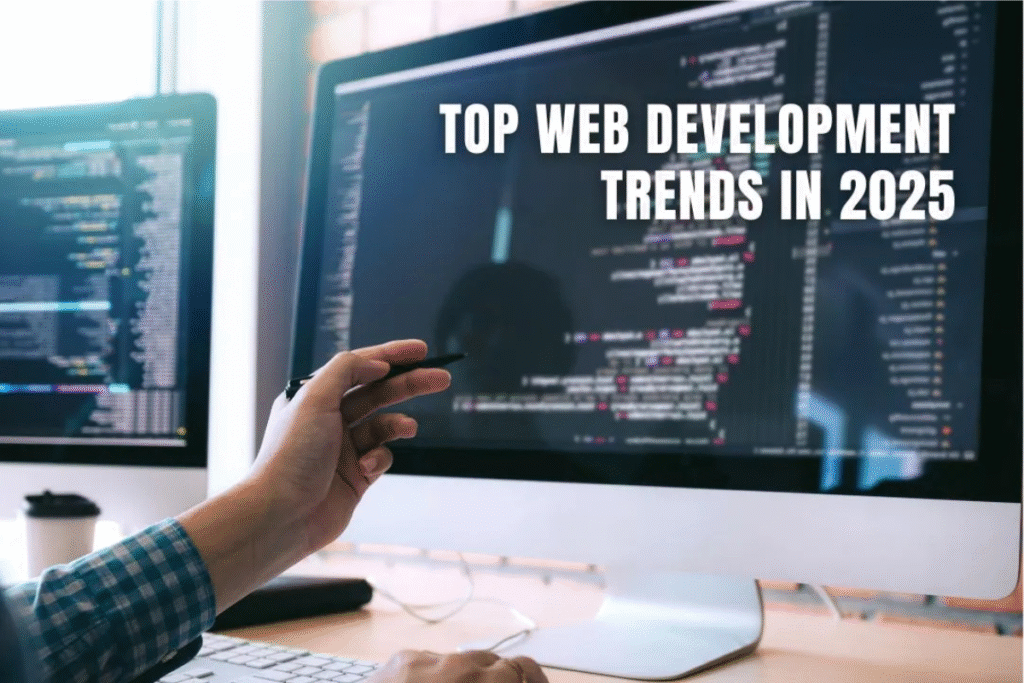Introduction
Web development is one of the fastest-evolving fields in technology. From static web pages of the early 2000s to today’s AI-driven, mobile-first, and highly interactive web applications, the journey has been remarkable. As we step into 2025, the landscape of web development is expected to transform even further. Developers, businesses, and digital creators need to stay updated with upcoming trends to remain competitive and deliver high-quality user experiences.
In this blog, we’ll explore the future of web development and highlight the top trends every developer must know in 2025. We’ll also provide a quick reference table for easy understanding, followed by detailed explanations.
Web Development Trends in 2025 – Quick Overview
Here’s a basic information table to give you a snapshot of the major trends shaping web development in 2025:
| Trend | Description | Impact on Web Development |
|---|---|---|
| AI-Powered Web Development | Use of Artificial Intelligence for coding, design, and personalization. | Faster development, smarter websites, enhanced UX. |
| Progressive Web Apps (PWAs) | Hybrid of websites and apps with offline support and fast loading. | Better mobile performance, wider reach. |
| Low-Code & No-Code Platforms | Tools that allow building websites/apps with little or no coding. | Democratization of web creation, faster prototyping. |
| Web3 & Decentralized Apps (dApps) | Blockchain-driven apps with decentralized data and transactions. | Transparent, secure, user-controlled ecosystems. |
| Voice Search Optimization | Websites optimized for smart assistants and voice queries. | Improved accessibility, SEO benefits. |
| Motion UI & Micro-Interactions | Enhanced animations and small interactive elements. | More engaging and user-friendly interfaces. |
| Cybersecurity-First Development | Prioritizing secure coding and data protection. | Safer user experiences, reduced cyber threats. |
| 5G & Edge Computing Integration | Faster networks with real-time web application responses. | Ultra-fast performance, seamless streaming, IoT integration. |
| API-First Development | Building websites with strong API connectivity. | Scalable, flexible, and integration-friendly applications. |
| Sustainability & Green Coding | Optimizing code and hosting for energy efficiency. | Eco-friendly websites, reduced carbon footprint. |
1. AI-Powered Web Development
Artificial Intelligence is transforming web development by automating repetitive tasks, generating code snippets, and even assisting in UI/UX design. In 2025, AI will be deeply integrated into development workflows through tools like GitHub Copilot, ChatGPT-based coding assistants, and AI-driven testing frameworks.
- Benefits: Faster coding, improved debugging, and personalized web experiences.
- Real-World Example: AI chatbots embedded in websites to provide instant support.
2. Progressive Web Apps (PWAs)
PWAs continue to be a dominant trend in 2025. They combine the best of mobile apps and traditional websites, offering features like offline mode, push notifications, and fast loading speeds.
- Benefits: Broader reach without app store dependency.
- Use Case: Twitter Lite, Starbucks PWA.
3. Low-Code and No-Code Platforms
In 2025, low-code/no-code platforms such as Webflow, Bubble, and Wix Studio will empower non-developers to create professional websites quickly. Developers can use these platforms for prototyping and MVPs, reducing development time drastically.
- Pros: Accessibility for non-tech users, cost-effective solutions.
- Cons: Limited customization for advanced features.
4. Web3 and Decentralized Apps (dApps)
Blockchain and decentralized technologies will reshape how we interact with the web. With increasing adoption of cryptocurrencies, NFTs, and smart contracts, developers will need to understand Web3 frameworks like Ethereum, Solana, and Polkadot.
- Key Advantage: Eliminates middlemen, provides transparency, and enhances security.
- Impact: Rise of decentralized social networks, finance apps, and digital identity systems.
5. Voice Search Optimization
With more users relying on smart speakers (Alexa, Google Home, Siri) and voice commands, optimizing websites for voice search is becoming crucial in 2025.
- Best Practices: Use conversational keywords, structured data, and FAQ-style content.
- Impact: Boost in organic search traffic and accessibility.
6. Motion UI and Micro-Interactions
In 2025, web experiences are moving beyond static designs. Motion UI and micro-interactions will dominate, making websites more dynamic, interactive, and user-friendly.
- Examples: Hover effects, animated buttons, scroll-triggered animations.
- Impact: Higher user engagement and improved customer retention.
7. Cybersecurity-First Development
With rising cyberattacks, developers must adopt security-first approaches in 2025. Practices such as multi-factor authentication, encryption, and vulnerability scanning are no longer optional but mandatory.
- Focus Areas: GDPR compliance, secure payment gateways, protection against DDoS.
- Impact: Builds trust and protects sensitive user data.
8. 5G and Edge Computing Integration
The widespread adoption of 5G and edge computing in 2025 will allow websites and apps to deliver ultra-fast, real-time experiences.
- Use Cases: Online gaming, VR/AR web applications, IoT dashboards.
- Impact: Minimal latency and seamless user interactions.
9. API-First Development
An API-first approach ensures that websites and apps can easily integrate with third-party services, devices, and platforms.
- Benefits: Scalability, flexibility, and improved developer collaboration.
- Example: Headless CMS systems like Strapi and Contentful.
10. Sustainability and Green Coding
As climate change concerns rise, sustainable web development is becoming a priority. Developers are focusing on energy-efficient hosting, optimized code, and lightweight frameworks to reduce carbon footprints.
- Example: Switching to eco-friendly hosting providers.
- Impact: Websites that are both efficient and environmentally conscious.
Conclusion
The future of web development in 2025 is exciting, driven by AI, blockchain, cybersecurity, and sustainability. Developers must adapt to these trends to build scalable, user-friendly, and future-proof web applications. Whether you’re a beginner or an experienced professional, embracing these innovations will help you stay ahead in the competitive digital landscape.
The journey of web development never stops, and those who evolve with technology will be the true game-changers.

